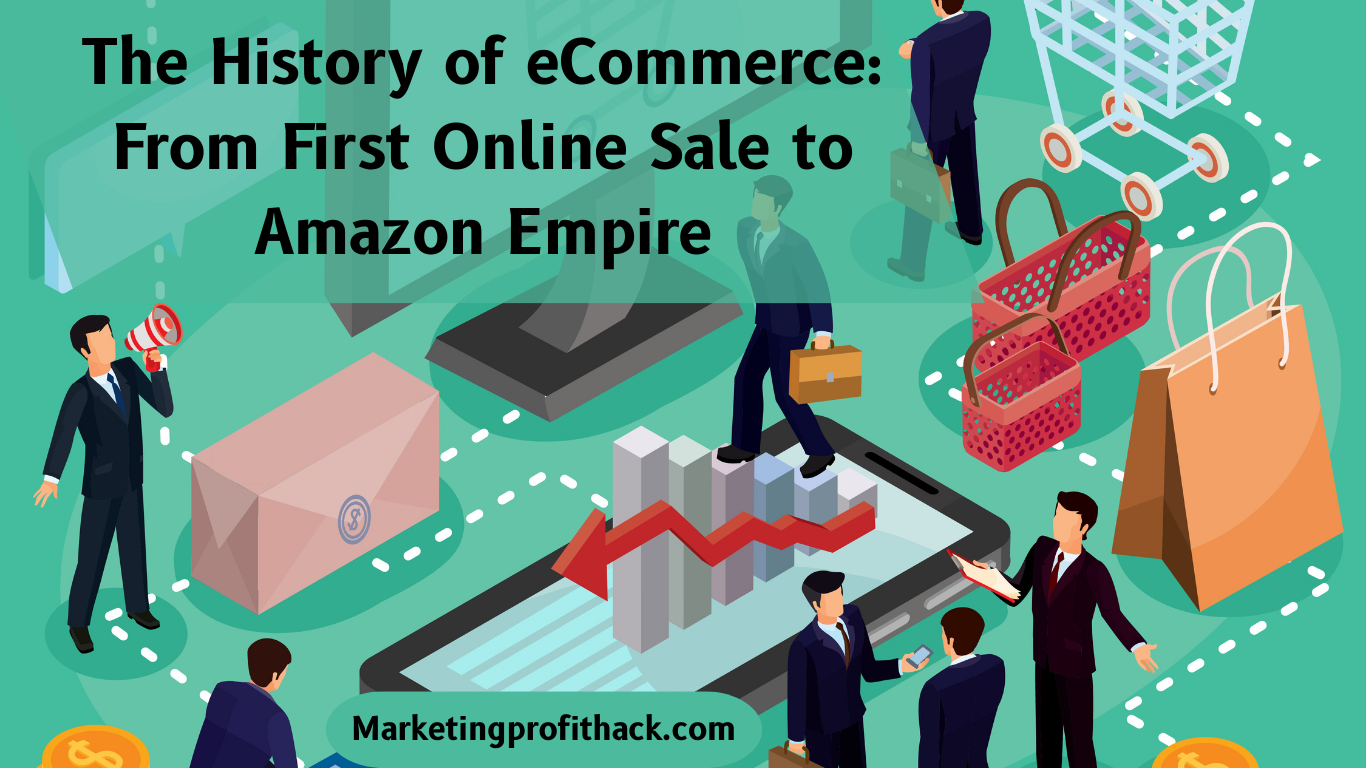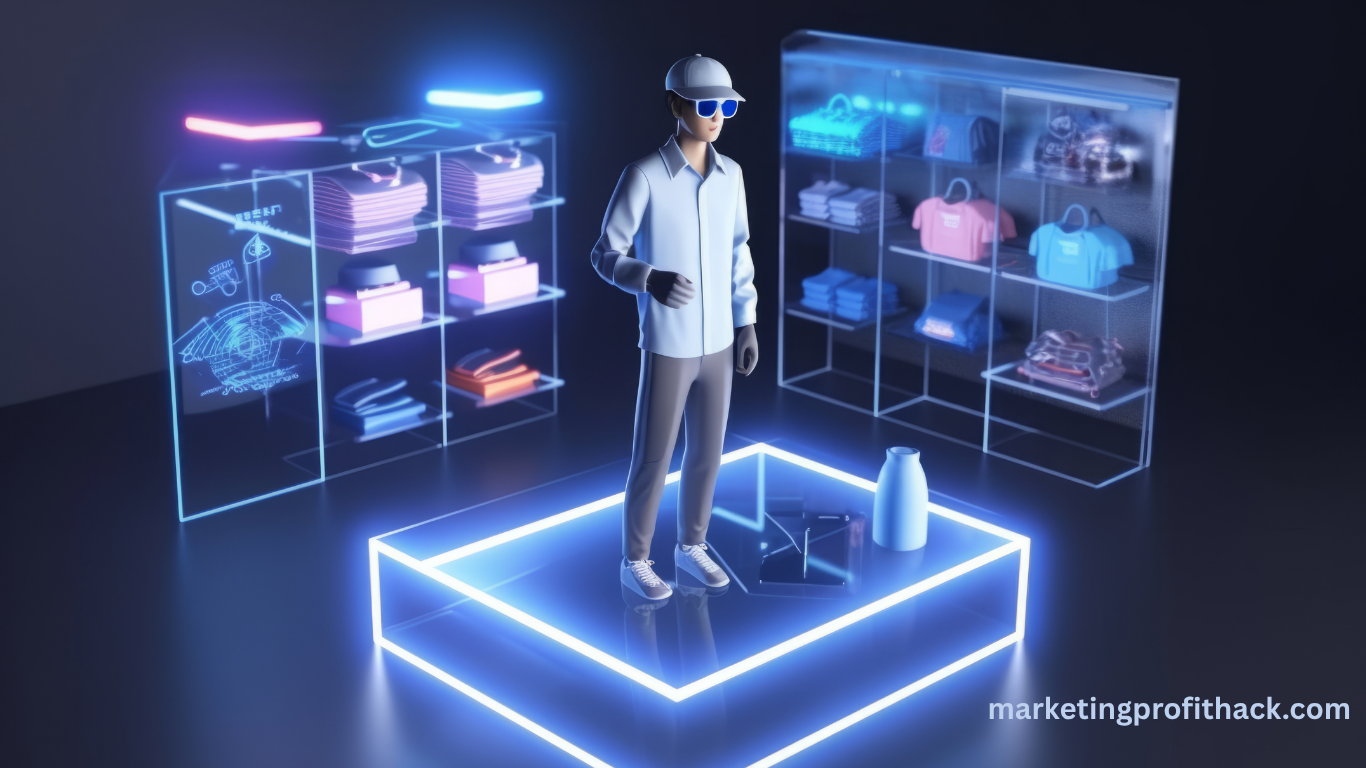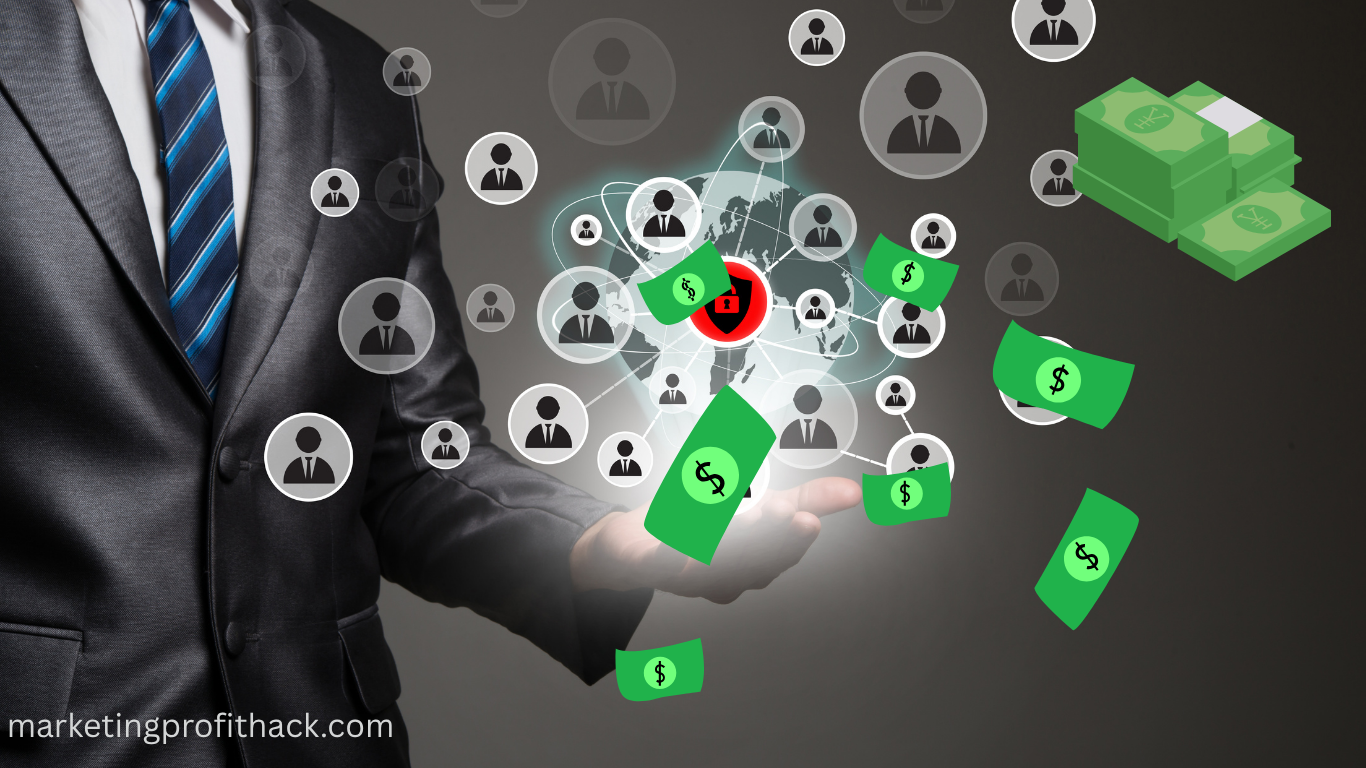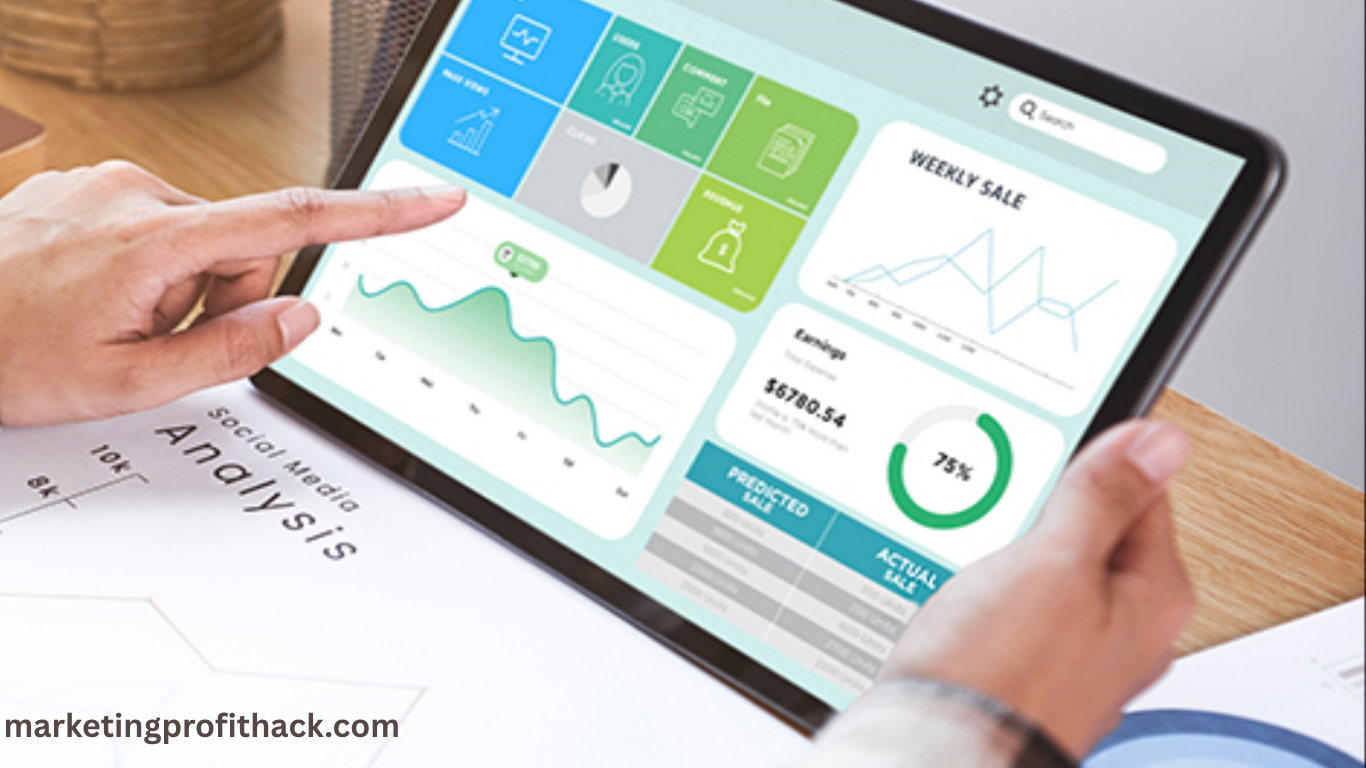The History of eCommerce: From First Online Sale to Amazon Empire

Strong 8k brings an ultra-HD IPTV experience to your living room and your pocket.
Welcome to my article “The History of eCommerce: From First Online Sale to Amazon Empire”. Imagine a time when the internet sounded like a fax machine and your mom yelled at you to get off the dial-up so she could use the phone. Ah yes, the glorious ‘90s — the era of Tamagotchis, baggy jeans, and the first-ever online sale. Fast forward a few decades, and now we can order a 6-foot inflatable unicorn, a bulk pack of batteries, and a burrito costume for your dog — all before you’ve even had your morning coffee. Welcome to the wild and wonderful world of eCommerce.
But how did we get here? eCommerce didn’t just pop out of the digital womb overnight. It had humble beginnings, evolved through many tech transformations, and eventually became the global powerhouse it is today. From the first encrypted online transaction in the ’90s to the rise of giants like Amazon and Alibaba, the journey of eCommerce is full of fascinating twists, dot-com booms (and busts), and innovation that changed the way we shop forever.
In this blog, we’ll take a time-traveling trip through the history of eCommerce — unpacking key milestones, iconic moments, and the tech that paved the way for today’s one-click shopping sprees. Whether you’re an aspiring online entrepreneur, a digital history nerd, or just someone wondering how we went from mail-order catalogs to Prime Day madness, you’re in the right place. Let’s dive in, and don’t worry — we’ll keep the jargon to a minimum and the fun turned all the way up.
Let me know if you want a detailed outline next!
Proven Formula for $50-$100 Daily Income with 0 COST — Watch This FREE Video >>
The Birth of eCommerce: When the Internet Met Shopping
Once upon a time — before Amazon Prime, before Shopify, and way before you could order sushi from your smartwatch — the internet was a curious, clunky invention mainly used by scientists, programmers, and a few very patient nerds. But as the World Wide Web started to gain traction in the early 1990s, a lightbulb went off: Hey, what if we could use this thing… to sell stuff?
The first recorded online sale happened in 1994, and believe it or not, it involved a Sting CD. Yes, someone booted up their computer, probably waited five minutes for the page to load, and bought Ten Summoner’s Tales from NetMarket, marking the first encrypted online transaction. It wasn’t flashy, but it was historic. And just like that, eCommerce was born — quietly, securely, and with a very chill soundtrack.
Before that, there were other… let’s say, less official digital transactions. Rumor has it that students at Stanford and MIT used ARPANET (the internet before it was cool) in the 70s to arrange a weed deal. While technically not eCommerce, it definitely proves that the desire to “click and buy” is as old as the internet itself.
As the internet matured, companies began to see its commercial potential. Online storefronts started popping up, and pioneers like Pizza Hut let customers place orders through their website (because, priorities). Payment security became a big focus too — enter SSL encryption, which made online payments safe-ish and helped convince people to type their credit card numbers into a computer screen without completely freaking out.
Proven Formula for $50-$100 Daily Income with 0 COST — Watch This FREE Video >>
In short, the birth of eCommerce was part innovation, part experimentation, and a whole lot of dial-up tones. It may have started with a single CD, but it sparked a revolution that changed how we shop, sell, and spend — forever.
Want me to move on to the next section, “The Dot-Com Boom and Bust”?
The Dot-Com Boom and Bust: eCommerce Takes Center Stage
Ah, the late ’90s — when frosted tips, Tamagotchis, and tech stocks were all the rage. This was the era of the Dot-Com Boom, a magical time when slapping “.com” on your business plan could get you millions in venture capital, even if your actual business idea was… well, let’s just say “ambitious.”
With the internet growing faster than your dial-up connection could handle, eCommerce officially stepped into the spotlight. Entrepreneurs and investors alike were drunk on the possibilities of selling stuff online. Giants like eBay (founded in 1995) and Amazon (also ’95) were born, showing the world that yes, people will bid on used Beanie Babies and buy books without ever touching them first.
But for every eBay success story, there were a dozen head-scratching failures. Remember Pets.com? It spent millions on marketing — including a Super Bowl ad — and had a sock puppet mascot that became more famous than the company itself. Spoiler alert: it folded faster than a paper towel in a rainstorm. Then there was Boo.com, an online fashion retailer that burned through $135 million in 18 months trying to sell clothes with 3D avatars before most people even had broadband. Yikes.
By 2000, reality came knocking. Investors realized that maybe — just maybe — companies should make money before going public. The market crashed, websites disappeared overnight, and “dot-com” went from badge of honor to cautionary tale. Billions were lost, and tech stocks plummeted faster than your internet connection after someone picked up the landline.
But here’s the twist: the bubble bursting wasn’t the end of eCommerce. It was a much-needed reset. The survivors — like Amazon and eBay — tightened up, focused on customer experience, and laid the groundwork for the modern online marketplace.
The dot-com era was messy, exciting, and slightly ridiculous — but without it, we wouldn’t have the sleek, powerful eCommerce platforms we use today. It was the adolescence of the internet: full of pimples, drama, and some seriously questionable decisions.
Want me to keep the momentum going and expand the next one, “The Rise of Amazon (and the Reign of Bezos)”?
The Rise of Amazon (and the Reign of Bezos)
Once upon a time in 1994, a man named Jeff Bezos left his cushy Wall Street job, drove across the country with a laptop and a dream, and set up shop in his garage. His mission? To build the “everything store.” But he started small — selling books online, because books don’t spoil, don’t break, and you don’t have to try them on. Smart move, Jeff.
By 1995, Amazon.com was live, and within 30 days it was shipping books to all 50 states and 45 other countries. The website looked like it was coded during a power outage, but people loved it. Why? Because it worked. It was convenient, fast, and let people shop in their pajamas without anyone judging their flannel onesies.
But Bezos didn’t stop at books. He saw the future and bet big — like, galaxy-brain big. In the late ’90s and early 2000s, Amazon began expanding its inventory: electronics, toys, kitchen sinks (literally), and soon… well, everything. Then came 1-Click ordering, which made impulse shopping dangerously easy, and Amazon Prime, which turned free 2-day shipping into a lifestyle and a punchline for anyone with a cardboard box addiction.
Behind the scenes, Bezos was also building a logistics empire. Warehouses (aka “fulfillment centers”) sprouted up everywhere, powered by robots and caffeine-fueled humans. Then there was AWS (Amazon Web Services), which quietly became the backbone of the internet while everyone was too busy ordering air fryers and novelty socks to notice.
Today, Amazon is a $1+ trillion eCommerce titan, and Bezos has gone from garage geek to space cowboy. Love him or loathe him, you can’t deny his role in revolutionizing how the world shops.
So next time a package magically appears on your doorstep 12 hours after clicking “Buy Now,” remember: it all started with a book, a garage, and one very bald man with a vision.
Let me know when you’re ready for the next one: “Mobile & Social Shopping: eCommerce Gets a Makeover”!
Mobile & Social Shopping: eCommerce Gets a Makeover
Just when we thought clicking a mouse to buy stuff was the peak of convenience, along came smartphones and said, “Hold my charger.” With the rise of mobile technology, eCommerce ditched the desktop and went full-on mobile. Suddenly, you could buy a pair of shoes, a pizza, and a flamingo pool float — all while waiting in line at the DMV.
This shift gave birth to what we now call mCommerce (mobile commerce), and it changed the game. Shopping apps like Wish, Etsy, and Shein popped up like digital mushrooms after a rainstorm. Retail giants like Amazon and Walmart made their apps smarter, faster, and more addictive than a TikTok scroll. And with mobile wallets like Apple Pay, Google Pay, and Samsung Pay, checkout became so frictionless it felt more like swiping on a dating app than spending real money (spoiler: your bank account disagrees).
Proven Formula for $50-$100 Daily Income with 0 COST — Watch This FREE Video >>
But the plot thickened — because social media saw what was happening and said, “Wait, we want in.” And thus began the era of social commerce. Platforms like Instagram, Facebook, and TikTok realized their users didn’t just want to like pretty things — they wanted to buy them too. Enter: Instagram Shops, Facebook Marketplace, and those TikTok influencers casually selling skincare products while dancing to Doja Cat.
The line between scrolling and shopping blurred. Suddenly, your feed became a digital mall — and your wallet never stood a chance. From swipe-up links to shoppable Reels, social platforms transformed into checkout lanes with really good lighting and curated vibes.
In short, eCommerce got a glow-up. It became faster, flashier, and available 24/7 right from your palm. Whether you’re on the couch, in an Uber, or pretending to work during a Zoom call — you’re just a tap away from buying literally anything.
Ready to wrap it all up with the last section? Next up: “The Future of eCommerce: What’s Next in the Digital Marketplace?” Let me know!
The Future of eCommerce: What’s Next in the Digital Marketplace?
So, what’s next for eCommerce? Are we heading toward a world where AI personal shoppers pick out our clothes, drones drop off our groceries midair, and we buy shoes inside the metaverse while sipping virtual coffee? Well… actually, yes. And probably sooner than you’d think.
The future of eCommerce is smart, immersive, and just a little sci-fi. One major player? Artificial Intelligence (AI). From personalized product recommendations that feel eerily psychic to chatbots that never sleep (or sass), AI is making shopping feel like it was tailor-made just for you — because, well, it was. Your browsing habits, purchase history, and even your pause-before-click moments are all fair game.
Next up: Augmented Reality (AR) and Virtual Try-Ons. Ever bought something online only to realize later that those “rose gold” curtains are more “salmon tragedy”? AR helps solve that. Now you can see how a sofa looks in your living room or how those sunglasses look on your face — before buying. No more buyer’s remorse. Just slightly awkward phone selfies of you virtually wearing shoes.
Then there’s voice commerce. Smart assistants like Alexa, Siri, and Google are learning to shop on your behalf. One day you might shout “Alexa, reorder dog food,” and not only will it do that — it’ll also recommend a matching chew toy and remind you to buy flea spray. Helpful… or mildly terrifying? You decide.
And let’s not forget the rise of cryptocurrency and blockchain. Some eCommerce sites are already accepting Bitcoin, and Web3 promises a future of decentralized marketplaces where you might shop from digital stores owned by no one and everyone at the same time. (Yep, it’s as trippy as it sounds.)
So buckle up. From hyper-personalization to immersive shopping experiences, the future of eCommerce is fast approaching — and it’s bringing drones, data, and a whole new definition of “add to cart.”
Would you like me to help you wrap this up with a witty and SEO-friendly conclusion for the full article?
Conclusion: From Sting CDs to Space Deliveries
We’ve come a long way, haven’t we? From that legendary 1994 Sting CD transaction to one-click ordering, Prime trucks, and AI recommending you dog food even though you don’t own a dog — eCommerce has officially taken over the world (and your inbox).
What started as a wild idea in a garage has evolved into a multi-trillion-dollar global industry that never sleeps and never stops upselling. We’ve watched it survive dot-com chaos, reinvent itself for mobile, crash your social feeds, and maybe even predict what you’ll buy next. (Seriously, how does it know you’re out of toothpaste?)
As for the future? It’s looking even more digital, more automated, and possibly more drone-filled. With AI, AR, voice shopping, and who-knows-what-else on the horizon, tomorrow’s eCommerce might be less about clicking and more about thinking — “Alexa, order more snacks.” Boom. Done.
But no matter how shiny the tech gets or how fast the shipping becomes, one thing remains the same: we love the thrill of buying things online — convenient, quick, and no awkward small talk with store clerks required.
So whether you’re a casual online shopper, a business owner, or someone who’s accidentally ordered socks at 2 a.m. thanks to targeted ads and too much coffee — just know: you’re part of a digital revolution that began with dial-up internet and a dream.
And if Jeff Bezos ends up delivering your packages from space one day? Honestly, we won’t even be surprised.
Want me to help polish the entire post into one full article next?
Proven Formula for $50-$100 Daily Income with 0 COST — Watch This FREE Video >>
Thanks a lot for reading my article on “The History of eCommerce: From First Online Sale to Amazon Empire“ till the end. Hope you’ve helped. See you with another article.
Source: The History of eCommerce: From First Online Sale to Amazon Empire
Affiliate Disclaimer : Some of the links in this article may be affiliate links, which means I receive a small commission at NO ADDITIONAL cost to you if you decide to purchase something. While we receive affiliate compensation for reviews / promotions on this article, we always offer honest opinions, user experiences and real views related to the product or service itself. Our goal is to help readers make the best purchasing decisions, however, the testimonies and opinions expressed are ours only. As always you should do your own thoughts to verify any claims, results and stats before making any kind of purchase. Clicking links or purchasing products recommended in this article may generate income for this product from affiliate commissions and you should assume we are compensated for any purchases you make. We review products and services you might find interesting. If you purchase them, we might get a share of the commission from the sale from our partners. This does not drive our decision as to whether or not a product is featured or recommended.
Note: IndiBlogHub features both user-submitted and editorial content. We do not verify third-party contributions. Read our Disclaimer and Privacy Policyfor details.







